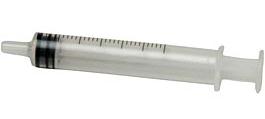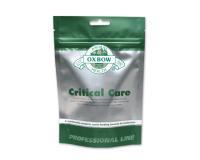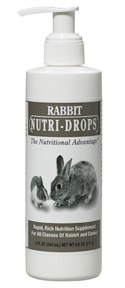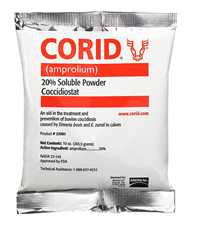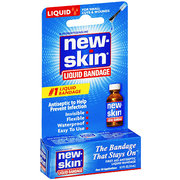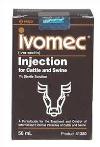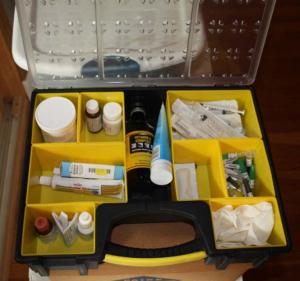| Item I Use | Purpose | Where I Purchase | |
The impact of rabbitry management on disease is often forgotten. Practices that I try to follow (yes, I fail now and then): [1] When moving rabbits to a different cage - new cage is a) 'burnt out' with my propane torch, b) brushed down with a stiff brush, and c) sprayed with a disinfectant - either Synergize, bleach solution or ammonia solution. Clean, sterilized dishes are put into the cleaned cage. [2] All dishes are washed and sterilized with bleach. Dishes with calcium buildup are soaked in white vinegar. [3] I routinely put out mice bait when I dump trays. It's imporant to rotate your baits. I use 'spool' type baits that I put right in the drop trays - the rabbits can't reach them, and other animals in our barn (free range turkeys, our dogs) can not get to them either. [4] Feed management: Bagged feed is kept off the floor with pallets. I don't buy more then I can use in 2-weeks time. I keep as much feed as possible in lidded trash cans. | |||
| The Minimum Basics | |||
| Essential items to have on hand. | |||
1cc Insulin Syringes |
These are syringes that diabetics use. For administering the Injectable Ivomec ORALLY (for routine worming or to treat Wry Neck), Oxytocin and any other medicine that is dosed in very small amounts. The syringes I buy come with non-removable needles (30-gauge, 1/2"). These are very tiny needles, bend easily, and will NOT pull up thick medicines like Combo-Pen/Dura-Pen. If you buy these without the needles, get the Luer-Slip tips versus the Luer-lock, as they are easier to give oral meds with. This is an example of a Luer-Lock syringe. The needle screws into the threaded syringe.
This is an example of a Luer-Slip syringe. The needle slides over the tapered end of the syringe.
|
Meijer pharmacy. You must purchase from the pharmacist. These are not available over the counter. Come in a box of 100. Also available thru Valley Vet, Klubertanz. |
|
3cc Syringes; Regular Luer-slip |
For feeding baby food/Critical Care to buns who will not eat and for administering Combo-Pen/Dura-Pen. 6cc are handy to have on-hand also. |
Tractor Supply Company, Valley Vet, Klubertanz. |
|
22-ga needles. |
I prefer 1/2" or 3/4" needles. 22-ga for most meds (will pull up thick Combo-Pen). A note on needle sizes: The LARGER the number, the SMALLER the diameter of the needle. A 30-gauge needle is very tiny. An 18-gauge needle is quite large. From Top to Bottom: 26G x 1/2"(brown), 25G x 5/8" orange); 22G x 1 1/4"(black); 21G x 1 1/2"(green); 20G x 1 1/2" (yellow);
19G x 1 1/2" (white). |
Tractor Supply Company, Valley Vet. |
|
Paste Wormers - Ivermectin and SafeGuard/Panacur. |
Wry Neck, Faders, Worms (Intestinal Parasites), Fur Mites My preference is to use SafeGuard or Panacur (active ingredient fenbendazole). I DO NOT give the paste Ivermectin to bunnies under 8-weeks of age anymore (too many accidental over-doses. I have NEVER over dosed with the SafeGuard). I have not had issues giving mature rabbits the paste Ivermectin. For a mature rabbit weighing approx. 4# I give a small amount, about the size of a pencil eraser. Adjust accordingly for younger bunnies and for weight. Repeat in 14-days. Internal (and External) Parasites: A Doctor's Diagnosis by Dr. Jay E. Hreiz, VMD taken from the 88th ARBA Convention RabbitCon Conference Proceedings. See the section "Intestinal Parasites". Wry Neck: I follow the protocol by Barbi Brown with the ADDITION of fenbendazole (SafeGuard or Panacur) 1x a day for 28 days. |
Tractor Supply Company, Rural King, some Feed Mills, etc. |
|
Terramycin Eye Ointment |
ANTIBIOTIC: General Eye Infections Run a small 'line' of the ointment in the infected eye. Close the eye lid and coat the eye with the ointment. At least 2x a day for 7-day. This can be difficult to find now. Depending on the severity of the infection, I may follow up with of a shot of Combo-Pen. "My" TSC no longer carries the Terramycin Eye Ointment, opting to carry Vetericyn products instead. I've purchased a bottle, used it, and have been very disappointed with the results. Personally, I think it's a waste of money. |
On-line; various cage-supply dealers. |
|
Anti-diarrheals |
Diahrrea I use Kaopectate (vanilla). Similar 'people' medicine is fine. One to 2-cc every hour until diahrrea is under control. Neomycin is also nice to have instead of the Keopectate. It's a little more expensive, about $17 for 16-ounces vs $6 for 8-ounces of Kaopectate, but effective. Used to treat scours in large animals but works for rabbits. Several drops every few hours till symptoms subside -- can be added to water: 1-teaspoon to one gallon water. In cases of diarrhea, pull the rabbits pellets and offer steam rolled oats and plenty of hay. Separate from any other rabbits. A rabbit with diarrhea can die in less then 24-hours, so immediate action is required. |
Any pharmacy for the Kaopectate. TSC, Rural King carry Neomycin. |
|
Simethicone Drops |
Bloat I use Meijer brand Infant Gas Relief Drops. Give a dropper full to bunnies with bloat to help relieve the gas pain. |
Any pharmacy. |
|
Oxbow Critical Care and/or Baby Food |
Off Feed Powdered food supplement for bunnies that have gone off feed - GOOD STUFF! This is a product I always pack when attending Convention or a large show. If you can't find the Critical Care, baby food (bananas, carrots, squash, etc) works well also. Pull up in the 3-cc syringe (no needle) and force feed to the rabbit. They usually like the taste and will eat it pretty well. I keep several jars of baby food on hand at all times (at 50cents a jar, it's a cheap investment). |
Critical Care can be found on-line and some cage-supply companies carry it. Baby food can be found at any grocery store. |
|
Triple Antibiotic Ointment |
For minor cuts, apply after tattooing. Cover lanced abcesses, etc. I also keep a tube in my tattoo kit. | Any pharmacy. |
|
Nutri-Drops |
Off Feed, Punky, Stress Situations, Faders I give to rabbits that are off feed or just acting punky. It boosts the immune system fast, helps improve appetite. GOOD stuff. This is a product I always pack when attending Convention or a large show. Any "faders" are immediately wormed with SafeGuard and then given Nutri-drops for several days until they start to perk up. |
Cage Supply companies. |
|
Hydrogen Peroxide |
To clean wounds, abcesses. DO NOT get in the eyes of the rabbit. |
Any pharmacy. |
|
Frozen Pineapple Juice Concentrate |
Wool Block I keep a can of this on hand at all times. Use to help rabbits with wool block. Mix a bit stronger then you would to drink. Syringe 15cc at least 2x a day for several days. Usually after 36-hours, the rabbit will start to pass the blockage. Fresh pineapple juice will also work. DO NOT use canned juice as the heat from the canning process kills the enzymes contained in the pineapple that help break down the wool. I have had NO issues with wool block since I increased the fat content in my rabbits feed (went from a 2.5% fat to a 4.0% fat content). Per the Merck Vet Manual: "The goals of treatment are to remove the obstruction, stimulate motility, restore GI microorganism balance, and relieve dehydration and anorexia. Treatment includes motility stimulants such as metoclopromide (0.5 mg/kg, PO or SC, tid-qid), fluid therapy, pain medication, and antiulcer therapy. Reestablishment of GI microflora may be assisted by probiotic treatment or cecotrophs from healthy rabbits. Several remedies have been proposed to assist in the break up or passage of a hairball. Pineapple juice contains the digestive enzyme bromelain and has been used to treat early cases of trichobezoars; an adult rabbit is given 10 mL of fresh or frozen juice through a stomach tube or intubation needle, sid-bid for 3 days. Both the fluid and the enzyme help to break up the matrix of the hairball. Canned pineapple juice is not as effective because the canning process destroys the enzyme. Papaya contains the enzyme papain, also called papayazyme. Papain enzymes do not break down the hair itself, but may help break down the mucus that holds the hairball together. Human health food or nutrition stores carry bromelain and papayazyme supplements as aids to digestion. Mineral oil and laxatives are not effective in removing the hair mass. Roughage (hay or straw) should be fed during the treatment to help carry the hair fibers through the GI tract and out with the feces. Surgical treatment is certain but risky. Prevention is the best option. Providing a high fiber diet, avoiding stress and obesity, environmental enrichment, and daily combing to remove loose hair effectively prevents this condition. Clinical research does not support routine doses of mineral oil, wetting agents, or proteolytic enzymes as effective preventives." |
Any grocery store. |
|
Combo-Penicillin/Dura-Pen or Pen-G |
ANTIBIOTIC: Vent Disease, Infections, Wry Neck DO NOT give plain Penicillin to rabbits! NEVER give orally! Pen-G contains Procaine - this is given in the muscle. Combo/Dura Pen contains Procaine AND Benzathine (referred to as long-lasting penicillin) and is given sub-q. Dosages are slightly different for the two. Given for several different malady's. Used to treat Vent Disease, infections, ear infections, used in conjunction with other med's for Wry Neck. |
Tractor Supply Company, Rural King - no prescription needed. Kept REFRIGERATED. Can also obtain from your veterinarian. |
|
| Additional, Nice To Have Items. | |||
Corid (amprolium) |
Coccidiosis Comes in a liquid or soluble powder. 5-days on, 5-days off, 5-days on. Used to PREVENT coccidiosis. Mixing instructions can be found on the Corid website for both the liquid and powder. Basically: 1-teaspoon Corid 9.6% Solution per gallon of water OR 3/4-teaspoon Corid 20% Soluble Powder per gallon of water. Internal (and External) Parasites: A Doctor's Diagnosis by Dr. Jay E. Hreiz, VMD taken from the 88th ARBA Convention RabbitCon Conference Proceedings. See the section "Coccidia". Additional information on this can be found in the Merck Vet Manual and Food & Agriculture Organization of the United Nations under the "Coccidiosis" section. Per the Merck Vet Manual (same link as above): "Treatment will not be successful unless a sanitation program is instituted simultaneously. Elimination of fecal-oral transmission of infective oocysts is achieved by preventing feed hoppers and water crocks from becoming contaminated with feces. Hutches should be kept dry and the accumulated feces removed frequently. Wire cage bottoms should be brushed daily with a wire brush to help break the life cycle of the protozoa. Ammonia (10%) solution is lethal to oocysts and is the best choice to disinfect cages or ancillary equipment exposed to fecal material. I run Corid through my entire herd 2x a year as a preventative and I use a product called Synergize Disinfectant to sterilize my cages. |
TSC, Rural King, Cage supply companies. |
|
Liquid Calcium Drench or Tums |
Kindling Aid Does having kindling difficulty (long labor, shaking) benefit from a dose of calcium. I have the liquid on hand for our goats and so I use that, but many breeders use Tums. If the doe will not eat the tablet, crush it, mix it with some water and syringe it into her mouth. A couple of days prior to delivery, Tums (1 per day in 1/2 pieces) in order to supply extra calcium for labor and contractions. Several well known breeders routinely give calcium to their expectant does, starting 2 or 3 days before the kindling date to help reduce any kindling problems. If you have no Tums or Calcium Drench on hand, these greens provide high levels of calcium (mg per 100g of food): Mint (210), Spring Greens (210), Parsley (200), Spinach (170), Watercress (170) and Kale (130). |
Tractor Supply Company has the Liquid Calcium Drench; Any pharmacy has Tums. |
|
Blood Stop Powder |
I have some, but have never used it. If you clip a nail too short, use this to stop the bleeding. Corn starch also works. |
Cage supply companies. |
|
Go-Dry Pen-G |
Administer directly into the vent of does with hutch burn or irritated vent areas. Contains Pen-G Procaine in sesame oil. |
Cage companies. |
|
Preparation-H |
Sore Hocks (Pododermatitis), inflamed rectal area Coat affected areas daily. A solid surface should be added to the cage so the rabbit can get his feet off from the wire. Sometimes youngsters will have red, swollen rectums. You can use Preparation-H on those areas to help reduce the swelling. |
Any pharmacy. |
|
Liquid Skin/New-Skin |
I've had does slice their new babies open with their toe nails. This works well to 'glue' them back shut. If you are trimming up a rabbit (wool breed) and nick them with your scissors, you can 'glue' their skin back together with this. Not for use with DEEP muscle cuts. |
Any pharmacy. |
|
Injectable Ivomec (labeled for cattle) |
Ear Mites, Fur Mites, Pinworms, Wry Neck Internal (and External) Parasites: A Doctor's Diagnosis by Dr. Jay E. Hreiz, VMD taken from the 88th ARBA Convention RabbitCon Conference Proceedings. See the sections "Ear Mites" and "Fur Mites". Wry Neck How to treat it from Barbi Brown. This has worked for me several times. |
KEEP REFRIGERATED. Tractor Supply Company, Rural King. |
|
Chlorhexidine Ointment |
Broad spectrum antimicrobial activity for dermatological conditions. Smells like Noxema. Used to sooth sores, rashes, minor cuts. I've used it to sooth areas affected by fly-stike, inflamed rectal areas caused by what I call "sticky butt" (a term used with young chicks. Sometimes young bunnies starting on pellets will get a ball of poo stuck to their bottoms. Working that off from them can sometimes tear their skin, or leave that area red looking.) |
My vet carries it. |
|
Vitamin-B complex |
Appetite stimulant. |
Vet, Tractor Supply Company, on-line. |
|
Acid-Pak, Quintrex Aqua-Lyte Electolytes or other similar products |
Add to the rabbits water under times of high heat, stress, off feed, travel, etc. Gatorade also works. I personally use a product available through KD Cage Company called Pro-Vita-Lyte-TM which is both electrolytes and vitamins. |
Cage supply companies. |
|
Rx NEEDED Lactated Ringers (along with 35cc Luer-Lock syringe, 18-ga needle) |
Lack of water intake/fluid loss. Given sub-q to quickly hydrate a rabbit that refuses to drink (due to Wool Block, etc), has severe diahrrea (Enterotoxemia, etc), bloat, Muccoid Entropathy (ME). 20 - 30cc given at least 2x a day, sub-q, until rabbit is back drinking and diahrrea has stopped. Use the 35cc syringe with the larger 18-ga needle for this (takes a long time to push that much fluid through a smaller needles). At Home Rabbit & Cavy Health by Dr. Jay E. Hreiz, VMD taken from the 88th ARBA Convention RabbitCon Conference Proceedings. See the section "Entropathy". Administering room temperature ringers will chill the rabbit (his body temp is about 101F and you just pushed 30cc of 70F fluid into him). I often wrap them in a towel and hold them for awhile to warm them up. |
Veterinarian for the Ringers; syringe and needles available thru TSC, Valley Vet. |
|
18-ga needle |
Administering Ringers, opening abcesses. This is a good sized needle that will work in opening an abcess. It's not uncommon for rabbits to get infected scent glands under their chins, from rubbing on their food dishes. Or, fly bites will get infected sometimes. Hold the rabbit securely and carefully push the needle into the center of the abcess, then remove. The infection should readily ooze from the hole made by the needle. Express all the infection out. Sometimes I will take a 3cc syringe, fill it with peroxide and flush the inside of the abcess to clean it as well as possible. Cover with some triple-antibiotic ointment. Watch daily for any other infection and to insure it is healing properly. Small gauge needles tend to make a hole that closes up quickly because they are so small. Depending on the severity of the abcess, you may want to follow with a shot of Combo/Dura-Pen or Pen-G. |
TSC, Valley Vet. |
|
Rx NEEDED Trimethoprim/sulfamethoxazole (SMZ/TMP oral antibiotic) |
Oral broad-spectrum antibiotic; infections, UTI's Good for little babies with infections (if mom chewed off an ear/foot/etc). Also used to treat Urinary Tract Infections in does. This is sulfa-based so it is easier on their intestinal tract then Penicillin is. |
Veterinarian. KEEP REFRIGERATED. |
|
Rx NEEDED Metacam Oral Suspension |
Pain medication. Bunnies with Wool Block, bloat, ME or are grinding their teeth. This is given orally. RABBITS MUST HAVE A GOOD INTAKE OF WATER WITH THIS MEDICINE. |
Veterinarian. |
|
Rx NEEDED Oxytocin |
This is used to INDUCE LABOR or aid in the strength of contractions. Must be used carefully, as you can reputure the does uterus if she is not physically ready to kindle. It has been my experience, that 0.1cc is all that is needed to throw a 4# Holland Lop doe into labor. Usually within 10 minutes she will be pushing out a kit. If the Oxy does not produce contractions right away, I watch her for 1-hour (sometimes it does take a doe longer to work out a large kit) then leave her be and hope she kindles on her own within the next 24-hours. If not, I give her a second shot of Oxy and hope that gets things moving. Again, I always watch a doe for 1-hour after giving Oxy. If a second shot of Oxy does not throw the doe into labor, I leave her be and let nature take over. She will either pass them on her own or...not. Use of Oxytocin to Induce Doe to Kindle from one of my Go-To sites, The Nature Trail. |
Veterinarian. |
|
Apple Cider Vinegar & White Vinegar |
Apple Cider Vinegar - can be added to the drinking water to increase their interest in breeding. White Vinegar - this is not a medicine, but works great to remove the calcium buildup on your rabbit dishes. I wash my dishes, soak them in a bleach solution and then soak any dishes with calcium buildup in white vinegar. A light rub with your fingers or dish cloth will remove the build up after 10-minutes or so. Dishes look good as new. |
Any grocery store. |
|

